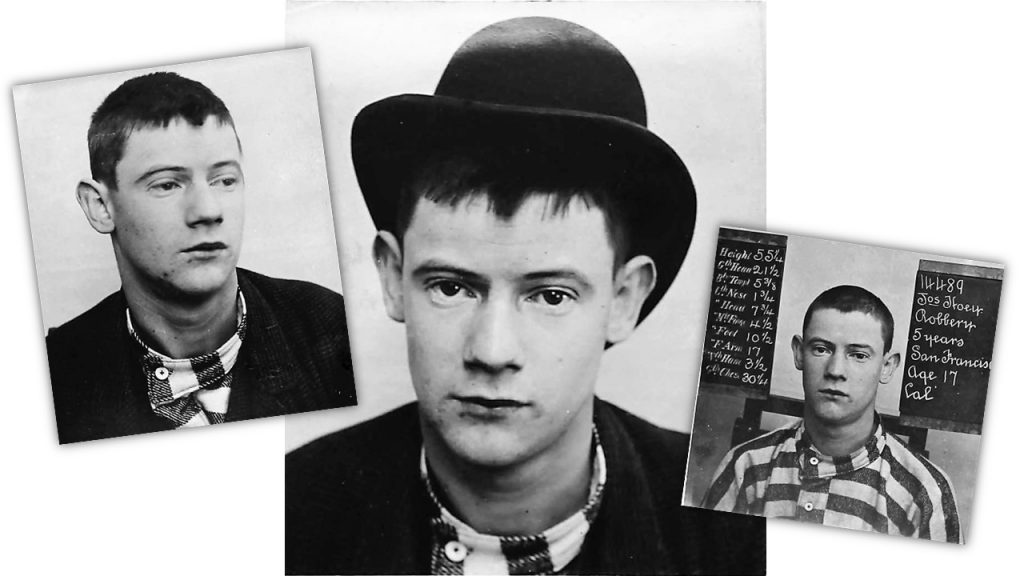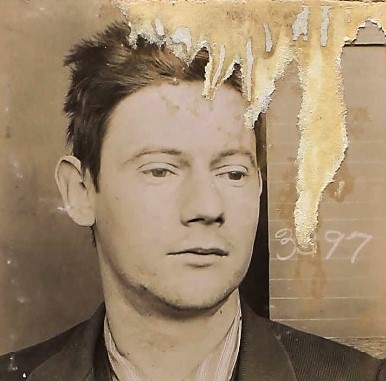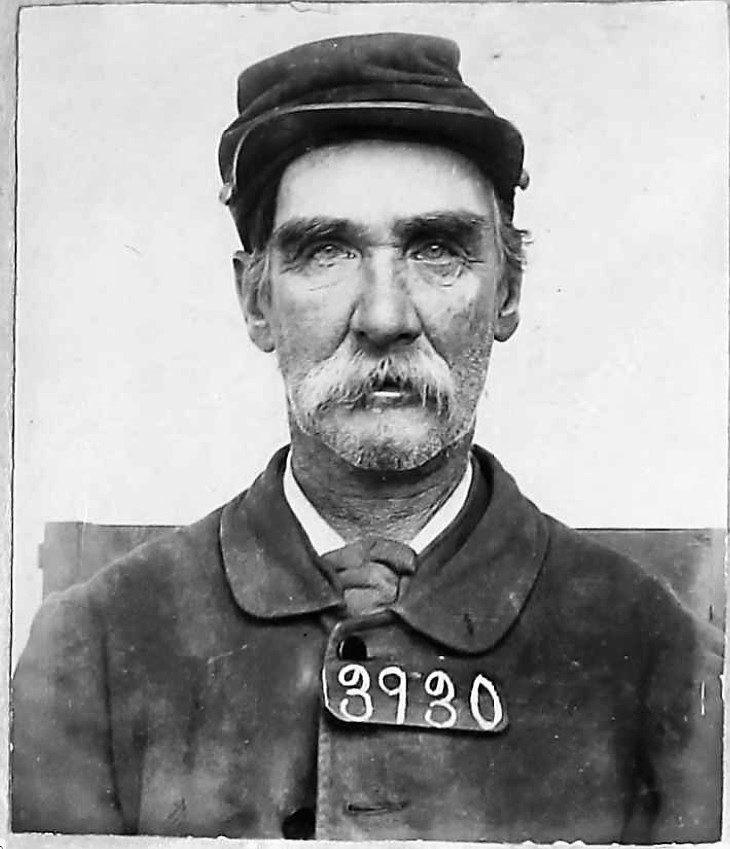Three lives revealed through 1891 photographs
In 1891, three incarcerated men sat for their photos, later to become permanent records in the San Quentin archives. Each photograph captures a moment in time.
While their faded photos tell a story, we go deeper to explore the paths that led each one to the state’s historic prison.
San Quentin archives show ‘gentlemanly’ embezzler

San Francisco’s bustling city was home to many businesses in the 1890s, including insurance agents C.L. Taylor & Company. In their employ was one Edward M. Burrows, a trusted accountant for 25 years.
He broke that trust when he was caught with his hand in the company till. At the time, some newspaper accounts described Burrows as “gentlemanly.”
The grey-bearded 62-year-old Burrows swindled the company out of roughly $10,000 over five years. Today, that sum is equivalent to $304,000.
An accounting discrepancy was Burrows’ undoing. Taylor gave Burrows a few hours to make sure the books were in proper order, but when time was up, the numbers were still off.
“Taylor returned to the office and found (Burrows) altering the account,” reported the San Francisco Call, Jan. 6, 1891.
Hiring an expert accountant, they quickly discovered a $3,000 shortage. The expert believed Burrows pocketed $10,000 in 20 separate incidents. To prove it, he would require more time.
“Burrows is a respectable-looking man (who) enjoyed the confidence and implicit trust of his employer for nearly a quarter of a century. (It) was only last Friday that suspicion rested upon him,” reported The Call. “(Taylor) believes (the crimes began) in 1886, although Burrows may have been stealing before that time.”
Burrows made no statement to reporters only saying it was “a business complication.”
He said he spent some of the money on a drinking spree and forgot what day it was. Essentially, he didn’t have time to cover his tracks.
Teenage umbrella snatcher

Stealing an umbrella and $10 in 1891 landed 17-year-old Joseph Hoey in state prison. His San Quentin archives’ photo has a kid-next-door quality to it.

Unfortunately, time spent in prison didn’t do much to reform the youth.
Just a few months after release, Hoey found himself in trouble once again. Falling in with his old crowd, including Joe Riordan, Hoey became his partner. Riordan already served three years at San Quentin, 1890 to 1893.
“The thieves (Hoey) fraternized with … joyfully welcomed (him home) to resume his criminal career,” reported the San Francisco Call, Dec. 31, 1894.
Riordan hadn’t been out long when he returned to his old tricks, finding himself accused of robbing multiple homes. With a guilty verdict, he was sentenced to state prison.
While Riordan awaited transport to San Quentin, his old friend Hoey paid him a visit. Together, they hastily hatched an escape plan. In short order, they acted on that plan.
As a deputy escorted Riordan from jail, “Hoey sprang out of an alley and dashed a handful of red pepper in the officer’s eyes.”
Riordan’s escape attempt was unsuccessful as he was quickly overpowered by deputies. Also, Hoey now faced a new set of charges — assisting an escape.
Riordan ended up back at San Quentin, 1894 to 1899, serving a six-year sentence.
For his role in the plot, Hoey earned seven years in Folsom State Prison.
Civil War veteran offers no apologies

John Gilman’s San Quentin photo is unique considering he’s wearing clothes similar to a Civil War Union soldier’s uniform.
In 1890, he stole a pocket watch, earning two weeks in county jail. In 1891, he earned a two-year stint at San Quentin for “petty theft with a prior.”
Gilman, in 1896, went on a drinking bender in Los Angeles, using proceeds from selling a stolen overcoat. While waiting for the judge to arrive in court, Gilman held court of his own.
“An old soldier, (Gilman wore a) blue uniform, a Grand Army of the Republic badge, and (held a) battered fatigue cap that had seen better days,” reported the Los Angeles Herald, Oct. 4, 1896.
He claimed to be captain of Company D at the Santa Monica soldiers’ home.
“Gilman boldly proclaimed in a loud voice that he was guilty,” the paper reported. “(He said he) served a 60-day sentence in the city jail in October and November 1895, and another 180 days earlier this year.”
Gilman claimed to be a Civil War veteran, a member of Company C, 23rd Illinois, with the 20th Army corps under Joe Hooker. He also claims he had been a prisoner of war, captured in 1862 at the battle of Shiloh.
Gilman offered no defense. “All I want you to do is to hold me over. I’ll go to the Superior Court and take my chances,” he said.
He was denied his request to go to San Quentin. The judge sent him to Folsom, where he served nearly two years.


By Don Chaddock, Inside CDCR editor
Others serving time that year were those convicted in the Whitecap Murders.
Learn more about California history at the state archives website.
Learn more about CDCR on our YouTube channel, Facebook page or Twitter account.